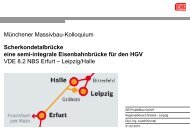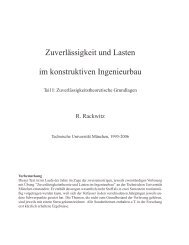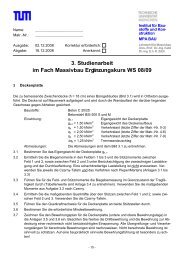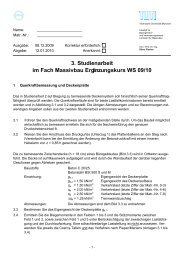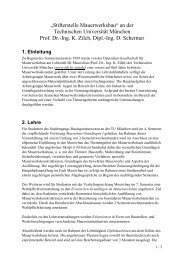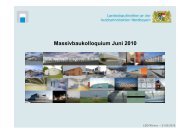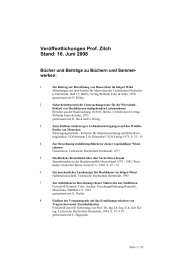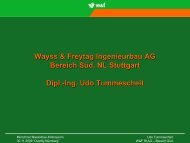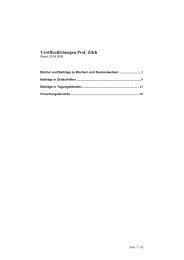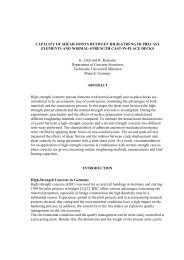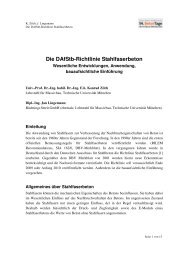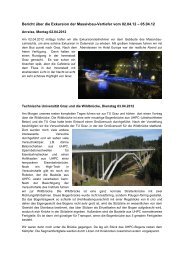Weiher and Zilch - Lehrstuhl für Massivbau
Weiher and Zilch - Lehrstuhl für Massivbau
Weiher and Zilch - Lehrstuhl für Massivbau
You also want an ePaper? Increase the reach of your titles
YUMPU automatically turns print PDFs into web optimized ePapers that Google loves.
<strong>Weiher</strong> <strong>and</strong> <strong>Zilch</strong> 2008 CBC<br />
comparison to bonded tendons <strong>and</strong> a higher dem<strong>and</strong> of reinforcing steel the savings of prestressing<br />
in this project did not lead to higher costs 31 . With this concept it is possible to<br />
realise the pros pointed out before, without higher efforts. A durable <strong>and</strong> safe product can be<br />
offered the owner. One has to bear in mind that the unbonded pt systems for internal use<br />
differ in quality <strong>and</strong> suitability.<br />
a)<br />
c)<br />
Fig. 6 a: cross section, arrangement of internal <strong>and</strong> external tendons at diaphragm<br />
Fig. 6 b: longitudinal section, pt span 1 to 3<br />
Fig. 6 b: detail of diaphragm, deviation <strong>and</strong> anchoring of external (red) <strong>and</strong> internal (blue) tendons<br />
ROSSRIETHER GRABEN<br />
Near Mellrichstadt (Bavaria) another pilot project with combined unbonded pt with external<br />
<strong>and</strong> internal tendons has been realized (three span structure with single box - approaches 40m<br />
each, inner span 50 m). As internal tendons a bundle tendon with wires in a duct has been<br />
used 32,33 . They are arranged in the slabs like at the Mühlenberg Viaduct. In each span just one<br />
concrete deviator has been placed. Also for this project there was no difference in the initial<br />
costs compared to the use of bonded internal tendons 32 . The design has been done as to the<br />
national code DIN 1045-1 25 <strong>and</strong> DIN Fachbericht 102 34 which are based on the Eurocodes 1<br />
<strong>and</strong> 2. Within this project the exchange of the steel of an internal tendon has been shown to<br />
check the feasibility 33 . The PE duct remained inside the structure. Transverse pressure<br />
created friction <strong>and</strong> clamping between the wires also led to a high force necessary for<br />
removal. Thus, the length <strong>and</strong> the deflections will be limited if the duct shall not be stressed<br />
to seriously. After re-installation of the prestressing steel, the duct has been refilled with wax.<br />
8<br />
b)




